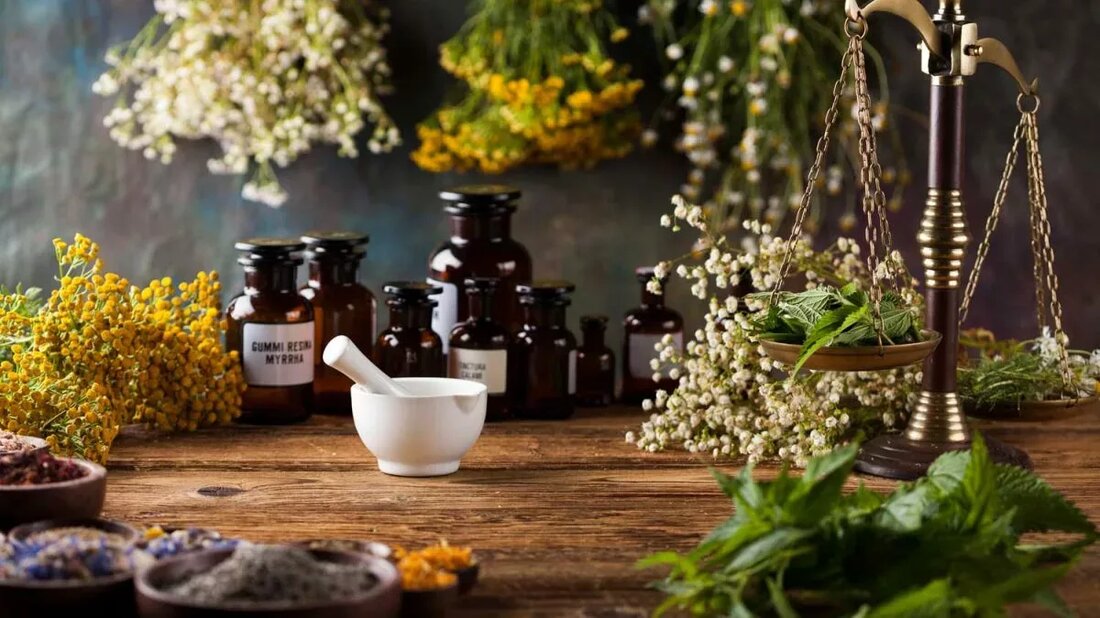Ginger Herbal Remedies - A Brief History
Ginger herbal remedies (Zingiber officinale), prepared in the form of herbal teas, herbal tinctures and other home remedies, have long been used as natural remedies for various ailments. The rhizome (underground stem) of this herb is used for both medicinal and culinary purposes. It has a pale, greenish-yellow to white-ivory color with a pungent, spicy aroma and a peppery, slightly sweet taste. Ginger root has a long, well-documented medicinal history dating back to 500 BC. The origin of herbal remedies Ginger The origin of the ginger herb can be traced back to India. This is because Indian ginger plants have the most variable DNA. The …

Ginger Herbal Remedies - A Brief History
Ginger herbal remedy (Zingiber Officinale), prepared in the form of herbal teas, herbal tinctures and other home remedies, have long been used as natural remedies for various ailments. The rhizome (underground stem) of this herb is used for both medicinal and culinary purposes. It has a pale, greenish-yellow to white-ivory color with a pungent, spicy aroma and a peppery, slightly sweet taste. Ginger root has a long, well-documented medicinal history dating back to 500 BC. BC
The origin of the herbal remedy ginger
The origin of ginger herb can be traced back to India. This is because Indian ginger plants have the most variable DNA. The name ginger is derived from the Sanskrit word horn root. This is probably a reference to its gnarled appearance. Ginger has been used as both an Ayurvedic medicinal herb and a culinary herb, not only in India but throughout Asia.
Ginger in Traditional Chinese Medicine
Chinese herbalists valued ginger for its anti-inflammatory properties. It also has diaphoretic properties that induce sweating and thereby expel toxins. In China it was used to drive away cold and restore depleted yang. Ginger is considered a natural antidote for a person who has had food poisoning.
By far the most well-known medicinal use of ginger is as an herbal remedy for seasickness. Chinese sailors have long been known to chew ginger as a remedy for sea sickness. The effectiveness of ginger herbal remedies for sea sickness has been confirmed by modern scientific research.
Ginger remedies in ancient Greece and Rome
The ancient predecessor of today's gingerbread was a Greek digestive aid, a piece of ginger wrapped in bread and taken after a heavy meal. Over time, the herb was incorporated into the bread and gingerbread was born.
When ginger was introduced to Europe through trade, it quickly became an essential spice. It was a popular ingredient in confectionery as Greek gingerbread evolved into a popular, sugary cake.
Ginger was an important trade product in the Roman Empire and from there to the European countries colonized by Rome. Even after the fall of the Roman Empire, it remained an important trade item. In the 14th century, ginger became one of the most traded spices alongside black pepper.
Ginger herbal medicine in the Middle Ages
Ginger has been common in Europe since the Middle Ages, when it was a popular ingredient in cakes and cookies across the country. The ladies baked ginger cakes for their knights and presented them painted with colorful sugar.
In Germany it is a family tradition that a gingerbread house is built in every house every New Year. On New Year's Eve, children of the household take a wooden hammer and break these gingerbread houses and then eat them together with the whole family.
In the Middle Ages, the potted ginger plant was carried across the oceans mainly by sea traders and is now grown all over the world.

 Suche
Suche
 Mein Konto
Mein Konto
